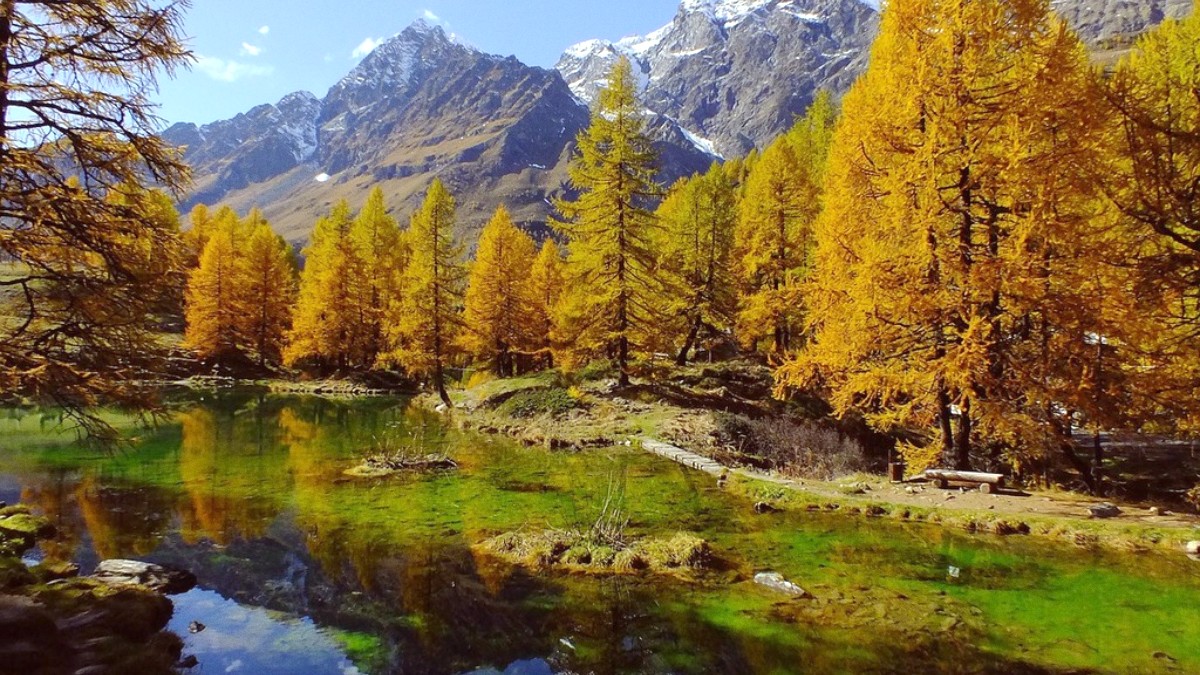
Liguria Piedmont And Valle Daosta, Italy
Spring (April-May): Temperatures stay mild, from an average of 8-15°C (46-59°F). Rainfall climbs as the season progresses. Snow begins to melt in lower altitudes, while higher peaks remain covered, forming a striking contrast of green valleys and white summits. This period marks renewal, with wildflowers beginning to appear.
Summer (June-August): Expect warm and pleasant weather, with average temperatures between 18-25°C (64-77°F). Humidity levels stay relatively low, making outdoor pursuits comfortable. Occasional thunderstorms occur, specifically in the mountains during late afternoon. Higher altitudes consistently furnish cooler temperatures, a welcome escape from valley floor heat.
Rapid shifts in mountain weather commonly occur in the Aosta Valley. Even during summer, temperatures drop significantly at higher altitudes, especially in evenings or when clouds move in. Carry layers of clothing, regardless of season. Snowfall comes heavily in the mountains during winter, and road conditions may call for snow tires or chains. Monitor local weather forecasts, especially when planning mountain excursions.
Ideal Timing for Specific Activities: Hiking/Trekking: June to early October. Skiing/Snowboarding: December to April. Cultural Sightseeing (Aosta city): April-May or September-October. Road Cycling: May to September.
July-August
Longer daylight hours for exploration.
Crowds gather; accommodation and service prices peak.
December-March
Prime skiing and snowboarding; festive atmosphere; stunning snowy landscapes.
Cold temperatures; peak prices for resorts and passes; limited non-ski attractions.
Spring (April-May) & Autumn (September-October)
Fewer crowds; blooming landscapes (spring) or beautiful fall colors (autumn); moderate temperatures; lower costs.
Variable weather; higher mountain trails may be inaccessible; some facilities may close.
Italy forms part of the Schengen Area, meaning entry stipulations conform to Schengen rules. Citizens from countries outside the European Union (EU), European Economic Area (EEA), or Switzerland generally need a Schengen visa for stays up to 90 days within any 180-day period. This visa covers tourism, business, and brief visits. Visa application occurs through the Italian embassy or consulate in your home country before travel. The process involves submitting an application form, necessary documents, and attending an interview.
Citizens from several countries do not need a Schengen visa for short stays (up to 90 days). This list includes the United States, Canada, Australia, New Zealand, Japan, South Korea, and many South American nations. If you belong to a visa-exempt nationality, entry into the Schengen Area happens with just your passport. Starting in mid-2025, visa-exempt non-EU nationals will need an ETIAS authorization before their trip. This is not a visa but a pre-travel authorization system, akin to the ESTA in the United States. The application process will be online, typically swift, and includes a small fee. Apply for ETIAS well before planned travel dates once it activates.
Validity for at least three months beyond departure from Schengen Area.
A valid Schengen visa in your passport.
Proof of sufficient funds and onward/return travel.
Minimum €30,000 for medical emergencies, hospitalization, and repatriation. World Nomads & SafetyWing are options. Also consider a policy that includes emergency medical evacuation: Travel Insurance Policy.
Confirmed bookings for hotels or other accommodation.
Prices vary based on travel style, but this guide gives a general framework.
The official currency in Aosta Valley, like the rest of Italy, is the Euro (€). ATMs, known as "Bancomat," appear widely throughout Aosta city and in larger valley towns. These machines are the most convenient way to withdraw cash at a fair exchange rate. Credit and debit cards (Visa, Mastercard, American Express) receive wide acceptance in hotels, mid-to-high range restaurants, and most shops. However, carrying some cash serves well for smaller purchases, street vendors, local markets, or when visiting more remote villages where card machines may be less common or unreliable. Inform your bank of travel plans to prevent card issues.
These are approximate costs and can vary.
Aosta and the Aosta Valley generally are safe regions for travelers.
Aosta Valley presents a generally very safe environment with low crime rates. Violent crime is rare. Petty crime, like pickpocketing, may occur in crowded tourist areas or on public transport, but less often than in major Italian cities.
Avalanches pose a risk in high mountain areas during winter and spring. Adhere to all posted warnings and advice from local authorities or ski patrols. Consult local conditions before engaging in off-piste skiing or high-altitude trekking. Hiring a certified mountain guide for challenging routes holds merit.
Landslides and rockfalls are possible in mountainous terrain, especially after heavy rain or snowmelt. Roads prone to this risk typically carry clear markings or closures.
Your travel insurance policy should cover medical emergencies, hospital stays, doctor visits, and prescription medications.
Look for emergency medical evacuation coverage, for mountain regions.
Standard policies might not cover adventure activities; check carefully.
Coverage for trip cancellation or interruption stands important for unforeseen circumstances like illness or travel disruptions.
Personal liability coverage is useful should you accidentally cause damage.
Standard policies may exclude adventure activities; confirm coverage for skiing or hiking.
A comprehensive Travel insurance policy with robust coverage for all trip aspects stands as a strong suggestion.
AirHelp is an option for flight delay/cancellation compensation. AirHelp
Without insurance, private medical services can be costly.
| Service | Number | Notes |
|---|---|---|
| General Emergency | 112 | Ambulance, Police, Fire (Most direct in Europe) |
| Medical Emergency/Ambulance | 118 | Direct line for medical assistance |
| Carabinieri / Polizia di Stato | 112 / 113 | National Police / State Police |